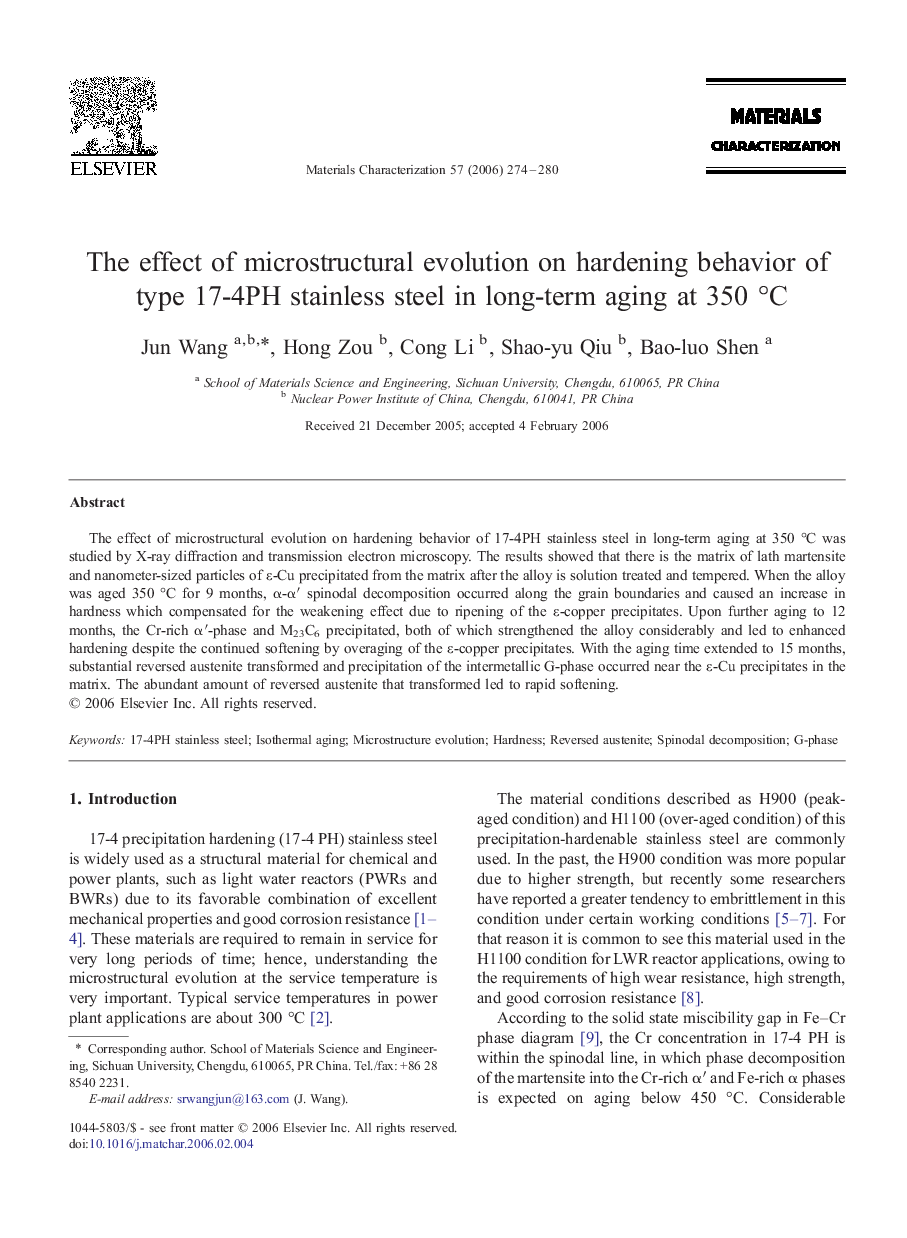| Article ID | Journal | Published Year | Pages | File Type |
|---|---|---|---|---|
| 1572806 | Materials Characterization | 2006 | 7 Pages |
The effect of microstructural evolution on hardening behavior of 17-4PH stainless steel in long-term aging at 350 °C was studied by X-ray diffraction and transmission electron microscopy. The results showed that there is the matrix of lath martensite and nanometer-sized particles of ε-Cu precipitated from the matrix after the alloy is solution treated and tempered. When the alloy was aged 350 °C for 9 months, α-α′ spinodal decomposition occurred along the grain boundaries and caused an increase in hardness which compensated for the weakening effect due to ripening of the ε-copper precipitates. Upon further aging to 12 months, the Cr-rich α′-phase and M23C6 precipitated, both of which strengthened the alloy considerably and led to enhanced hardening despite the continued softening by overaging of the ε-copper precipitates. With the aging time extended to 15 months, substantial reversed austenite transformed and precipitation of the intermetallic G-phase occurred near the ε-Cu precipitates in the matrix. The abundant amount of reversed austenite that transformed led to rapid softening.
